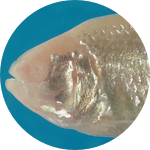About This Project
Estimating and monitoring population sizes of rare and endangered cave animals is a daunting task, mainly because it is extremely difficult and dangerous for humans to penetrate their environment and come face to face with them. To circumvent this problem, I will explore the potential of DNA suspended in groundwater to make inferences about population sizes of an aquatic cave species, the olm Proteus, in different cave systems in south-eastern Europe.
Ask the Scientists
Join The DiscussionWhat is the context of this research?
Subterranean animals are some of the most cryptic organisms on the planet. Because humans are often unable to enter their habitat, they are also some of the hardest organisms to study in the natural environment. The most prominent dweller of karst groundwater, the olm (Proteus anguinus) illustrates this point well. Despite its outstanding conservation importance and centuries of research, assessing its population sizes has only recently been undertaken. While the capture-mark-recapture approach is very thorough and accurate, it also is technically demanding and requires highly trained personnel of diverse skills, including dangerous cave diving. It therefore falls short when frequent monitoring of population size is required, for example as a mandatory part of any conservation plan.
What is the significance of this project?
A relatively fast and simple alternative approach may be quantification of the genetic material that animals release into their aquatic environment. Detection of biological species by environmental DNA (eDNA) has great promise as a proxy for conventional inventory methods (see Additional Info), and as shown for the first time on Proteus, the approach is particularly useful for detecting and monitoring the presence of aquatic cave animals. Through this study I will initiate the development of the methodology for estimating population sizes of the endangered cave salamander Proteus based on eDNA detection. The results will provide the first clue about the value of this potentially transformative method for long-term monitoring and conservation of other aquatic cave animals as well.
What are the goals of the project?
I will investigate the following questions: How do estimated quantities of target eDNA in water samples taken (A) from different natural cave systems and (B) from different segments along a subterranean river in a single cave system correlate with population sizes (in terms of biomass) estimated in the capture-mark-recapture method? Next, does varying sample volume improve this correlation? And finally, does varying filter pore size improve this correlation? To answer these questions, I will use and modify the PCR technique (see Additional Info) developed for detecting the presence of Proteus eDNA. Samples will be collected and analyzed in January and February (2017), the months of minimal precipitation, when eDNA in groundwater is expected to be the most concentrated and localized.
Budget
The funds requested cover 50% of the total project budget. They will be used to purchase consumables used in sampling, filtration and DNA analyses, 50% of accredited DNA lab bench-space and equipment rental during the project, and 100% reimbursement for travel, meals and lodging for the volunteers during fieldwork. All my laboratory work will be done on a voluntary basis. All re-usable filtration equipment, 50% of lab rental expenses and all administrative expenses will be purchased with my own funds or funds raised elsewhere.
Endorsed by
Meet the Team
Spela Goricki
I obtained my doctoral degree in 2006 at the University of Ljubljana, Slovenia, on phylogeographic and taxonomic studies of the European blind cave salamander, or the olm, Proteus anguinus. From 2007 to 2012 I was a postdoctoral researcher in Dr. William Jeffery’s lab at the University of Maryland, investigating eye degeneration of the Mexican blind cavefish Astyanax mexicanus. In 2009 I became interested in regeneration of pigmented organs in the oral siphon of the sea squirt Ciona intestinalis. The studies of molecular mechanisms of siphon regeneration, which I was conducting at the Marine Biological Laboratory in Woods Hole, MA were designed to establish Ciona as a model for studying regeneration in non-vertebrate chordates. In recent years I have been involved in the development of the methodology to search for cave fauna in karst groundwater through detection of their DNA in water samples collected from springs, wells or caves (environmental DNA). At home, I'm raising seven ducks.
Additional Information
Environmental DNA (eDNA) is collected from water samples by filtering. Species are then detected and identified by extracting and amplifying short fragments of DNA by polymerase chain reaction (PCR) using specific DNA primers and probes. Interested citizens can become directly involved during the initial stages of the assay, i.e. water sampling and filtration, since groundwater is sampled from accessible sites such as springs, wells or caves (see photo below) and filtered daily in a field laboratory.
.jpg)
Photo credits: Horton H. Hobbs III (Cover Image), Tajda Gredar (Additional Info), Gregor Aljancic (Researcher Info).
Project Backers
- 48Backers
- 107%Funded
- $5,946Total Donations
- $123.88Average Donation


